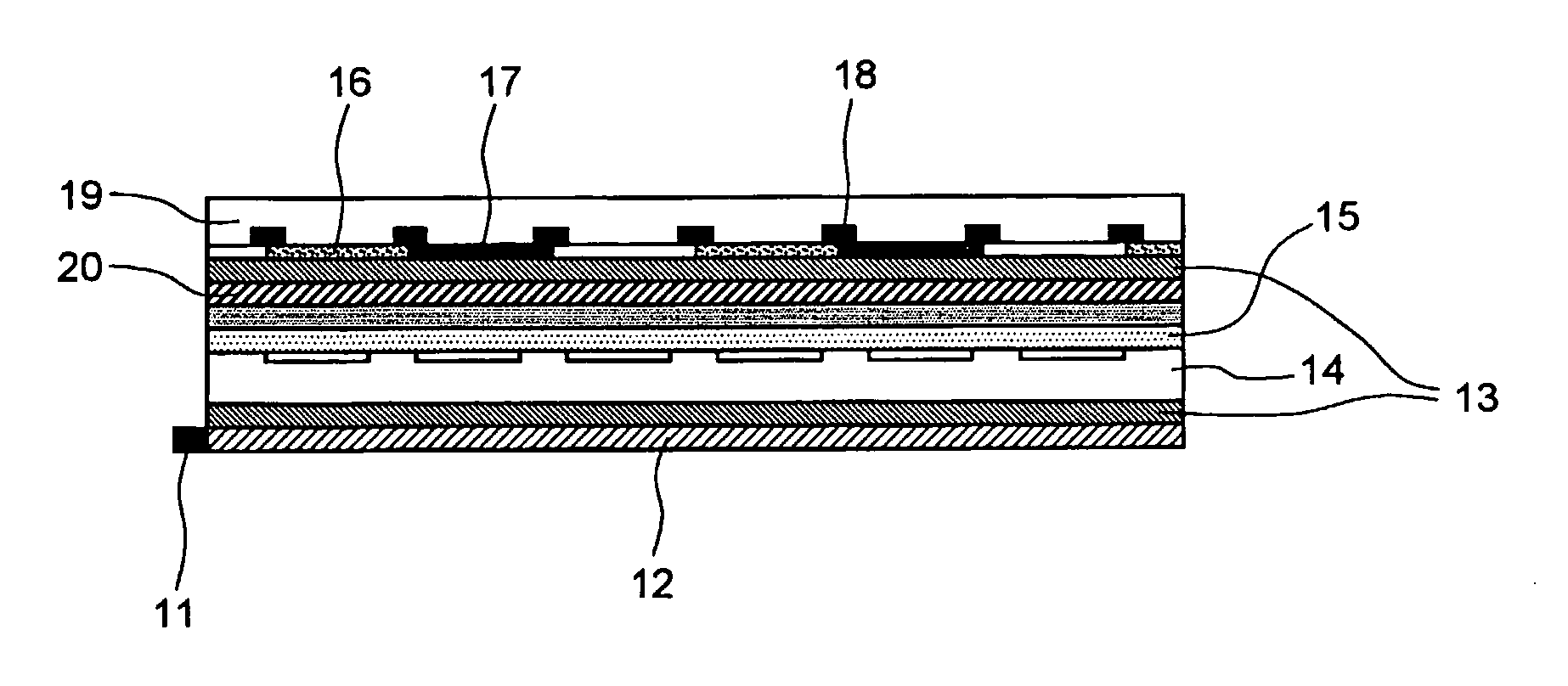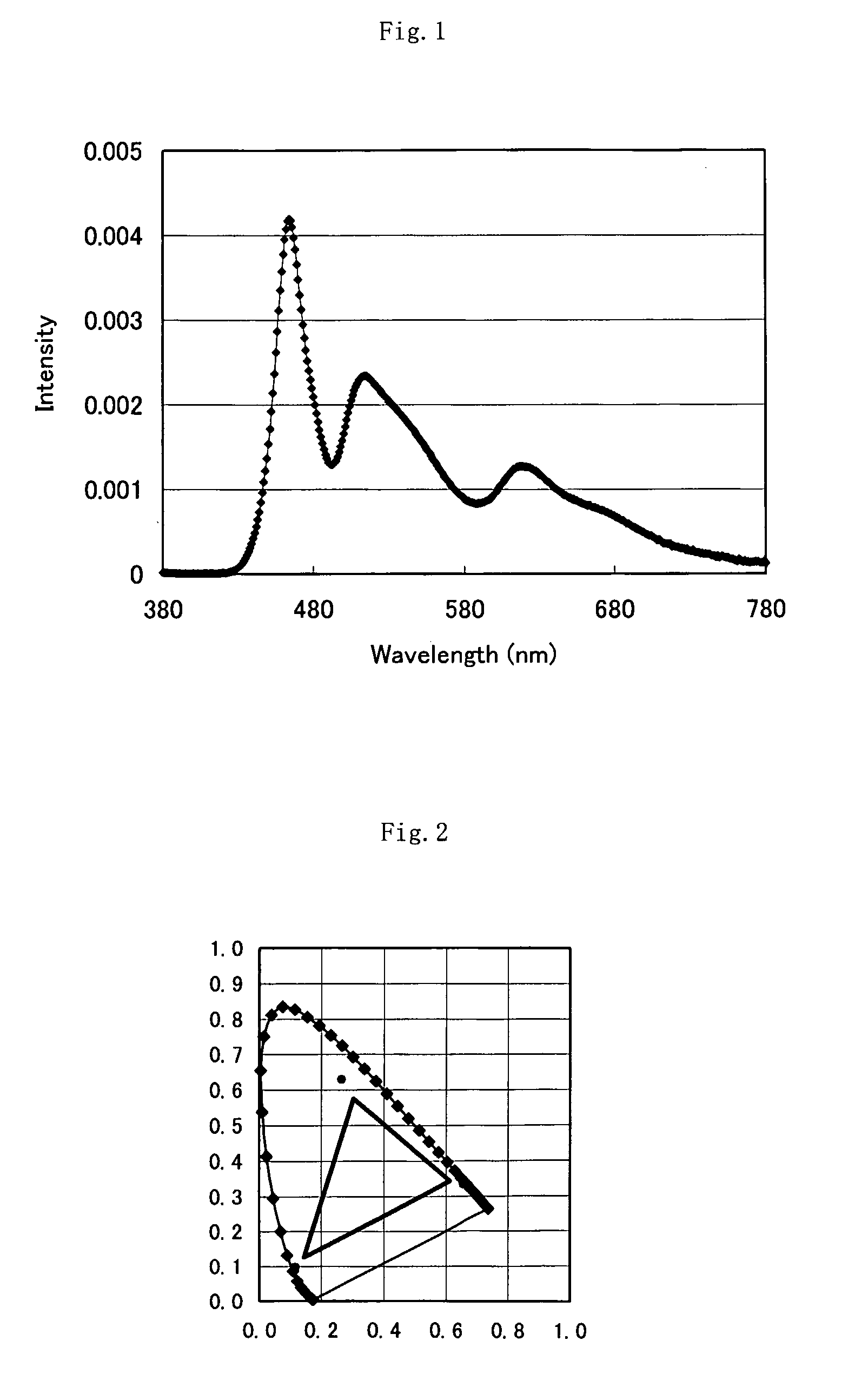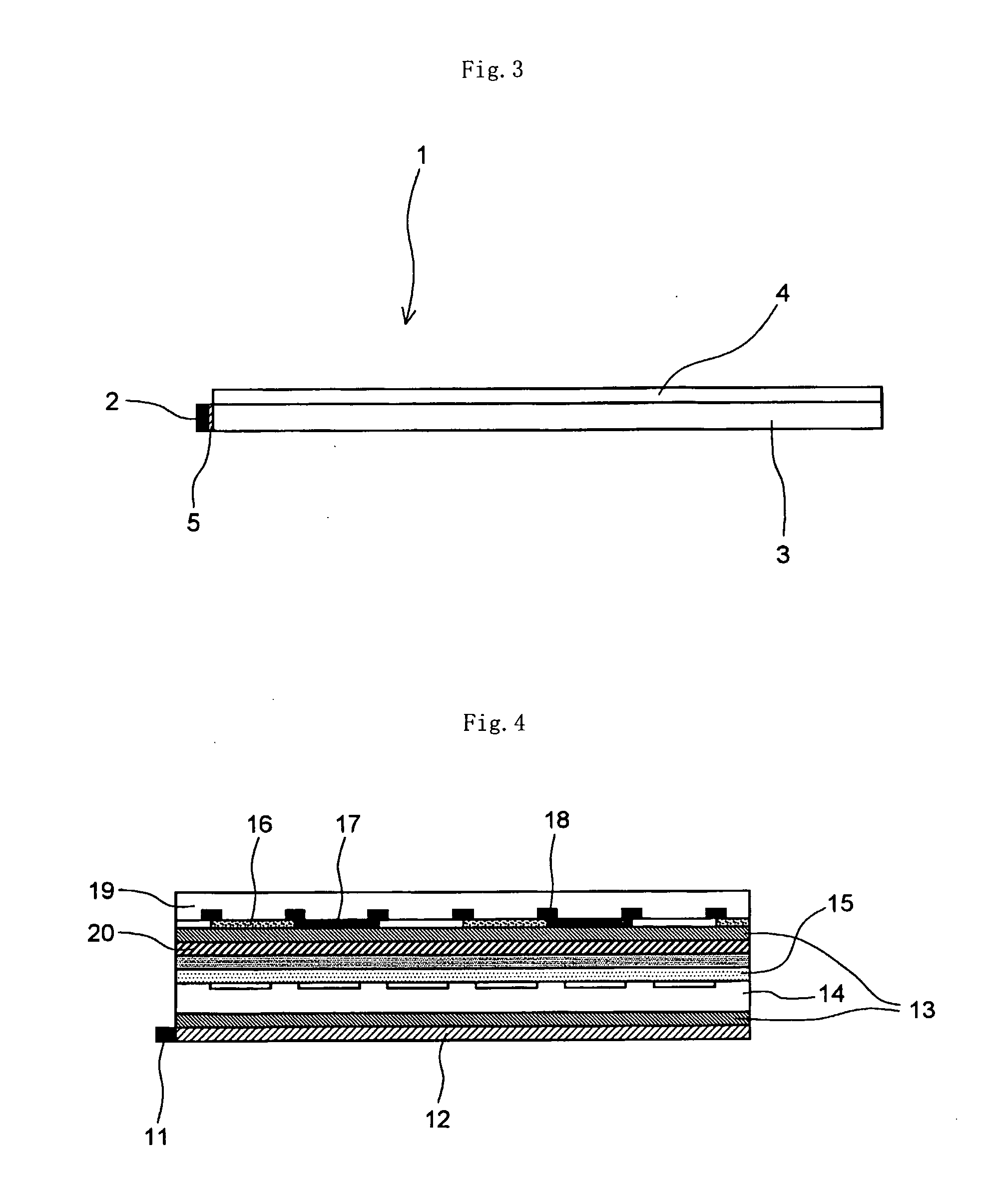Light -Emitting Body,Lighting Device And Display Device Using The Same
a technology of light-emitting body and display device, which is applied in the direction of indium organic compound, transportation and packaging, coating, etc., can solve the problems of poor color rendering properties, complication of the system, and inferior color rendering properties of the combination, and achieve the effect of wide directivity
- Summary
- Abstract
- Description
- Claims
- Application Information
AI Technical Summary
Benefits of technology
Problems solved by technology
Method used
Image
Examples
example 1
[0138] A secondary luminescent unit was prepared by adding 9 mg of an iridium complex (E2) and 1 mg of an iridium complex (E17) into a mixture of 5 g of bisphenol A diglycidyl ether and 5 g of methylhexahydrophthalic anhydride. After mixing the materials, the mixture was defoamed. Thus obtained mixture was poured into a recess portion of a cup of a lead frame in which a blue light-emitting diode serving as a primary luminescent unit was disposed and cured at 120° C. for 1 hour. Furthermore, into a mold form for a lamp-type (bombshell type), a mixture of bisphenol A diglycidyl ether and methylhexahydrophthalic anhydride was poured in advance, and then the lead frame was immersed, followed by curing at 120° C. for 1 hour, to thereby prepare a lamp-type white LED. With respect to the obtained white LED, the x and y chromaticity coordinates, the color rendering index, the initial luminous efficiency and a decrease in the luminous efficiency after 100-hour operation were measured. Result...
example 2
[0139] A lamp-type LED was prepared in the same manner as in Example 1 except that 8.9 mg of a complex (E1) and 1.1 mg of a complex (E16) were used as the iridium complex. With respect to the obtained white LED, the x and y chromaticity coordinates, the color rendering index, the initial luminous efficiency and a decrease in the luminous efficiency after 100-hour hr operation were measured. Results thereof are shown in Table 1.
example 3
[0140] A lamp-type LED was prepared in the same manner as in Example 1 except that 9.1 mg of a complex (E3) and 0.9 mg of a complex (E18) were used as the iridium complex. With respect to the obtained white LED, the x and y chromaticity coordinates, the color rendering index, the initial luminous efficiency and a decrease in the luminous efficiency after 100-hour hr operation were measured. Results thereof are shown in Table 1.
PUM
| Property | Measurement | Unit |
|---|---|---|
| wavelength | aaaaa | aaaaa |
| emission peak | aaaaa | aaaaa |
| emission peak | aaaaa | aaaaa |
Abstract
Description
Claims
Application Information
 Login to View More
Login to View More - R&D
- Intellectual Property
- Life Sciences
- Materials
- Tech Scout
- Unparalleled Data Quality
- Higher Quality Content
- 60% Fewer Hallucinations
Browse by: Latest US Patents, China's latest patents, Technical Efficacy Thesaurus, Application Domain, Technology Topic, Popular Technical Reports.
© 2025 PatSnap. All rights reserved.Legal|Privacy policy|Modern Slavery Act Transparency Statement|Sitemap|About US| Contact US: help@patsnap.com



